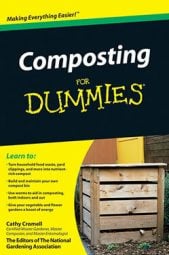Understanding temperature phases and managing a hot compost pile help you produce useable compost quickly. All materials eventually break down in cool, unmanaged compost piles as well, but decomposition occurs faster with higher temperatures. Also, if you need to destroy weed seeds or plant pathogens during the composting process, creating a hot pile is essential.
Following are tips for working with a hot pile:
Take its temperature: Use a compost thermometer to take your pile's temperature daily. Record it in a notebook or spreadsheet, and over time you'll get a feel for how long different phases take with your composting ingredients and methods.
Size it right: Compost piles require mass to self-insulate and maintain high temperatures during thermophilic composting. The minimum size is 3 x 3 x 3 feet (1 cubic yard or 1 cubic meter) up to 5 x 5 x 5 feet (1.5 cubic meters). This size allows the material to self-insulate and is easy to turn for a typical gardener. Larger sizes inhibit airflow to the center of the pile.
Turn, mix, and water: Temperatures drop as supplies of food, air, and water are exhausted. Turning the pile to aerate, mixing undecomposed ingredients on the outside into the center, and/or adding moisture may encourage temperatures to rise and promote more rapid decomposition. At some point, food supplies are exhausted, and turning the pile no longer boosts temperatures.
Destroy pathogens and weed seeds: Most plant pathogens are destroyed if temperatures remain between 130 and 140 degrees Fahrenheit (54 to 60 degrees Celsius) for 72 hours. Most weed seeds are destroyed if exposed to temperatures above 131 degrees Fahrenheit (55 degrees Celsius) for 72 hours.
Don't overheat: Heating your pile above 170 degrees Fahrenheit (77 degrees Celsius) for more than a few hours is not recommended because it inhibits most microbial activity and shuts down the decomposition process.
If the pile is too hot, turn it to aerate the core and release heat build-up.

